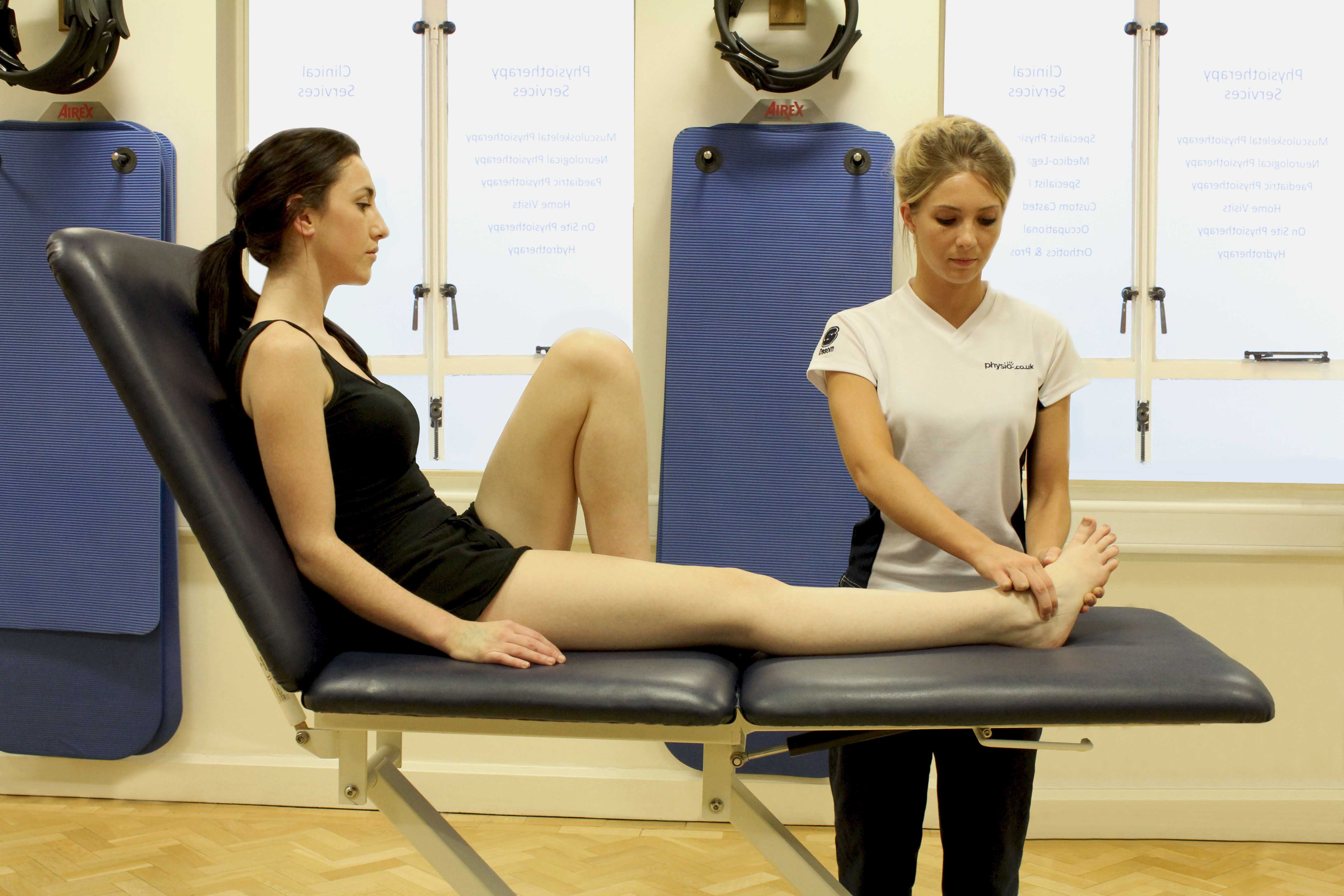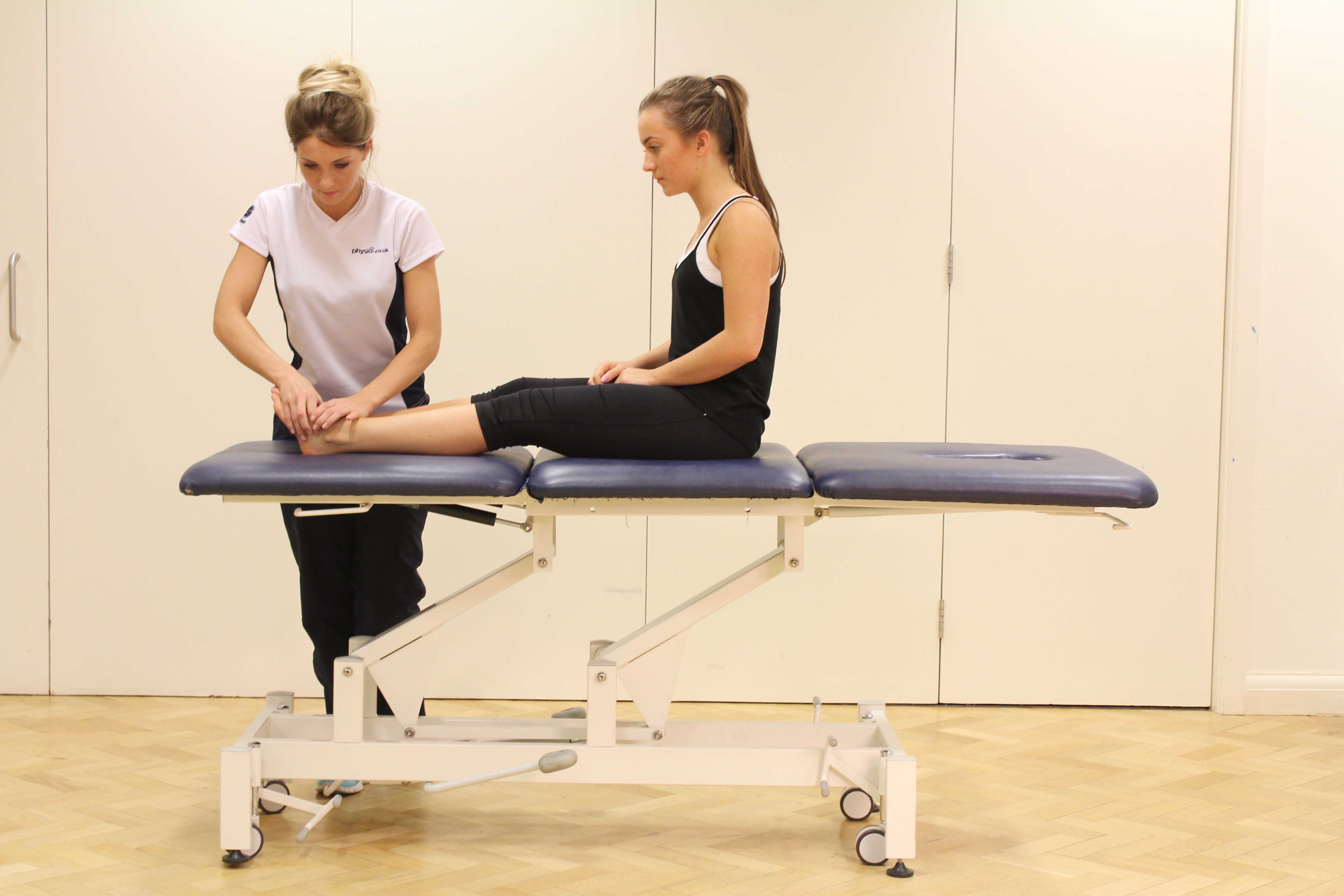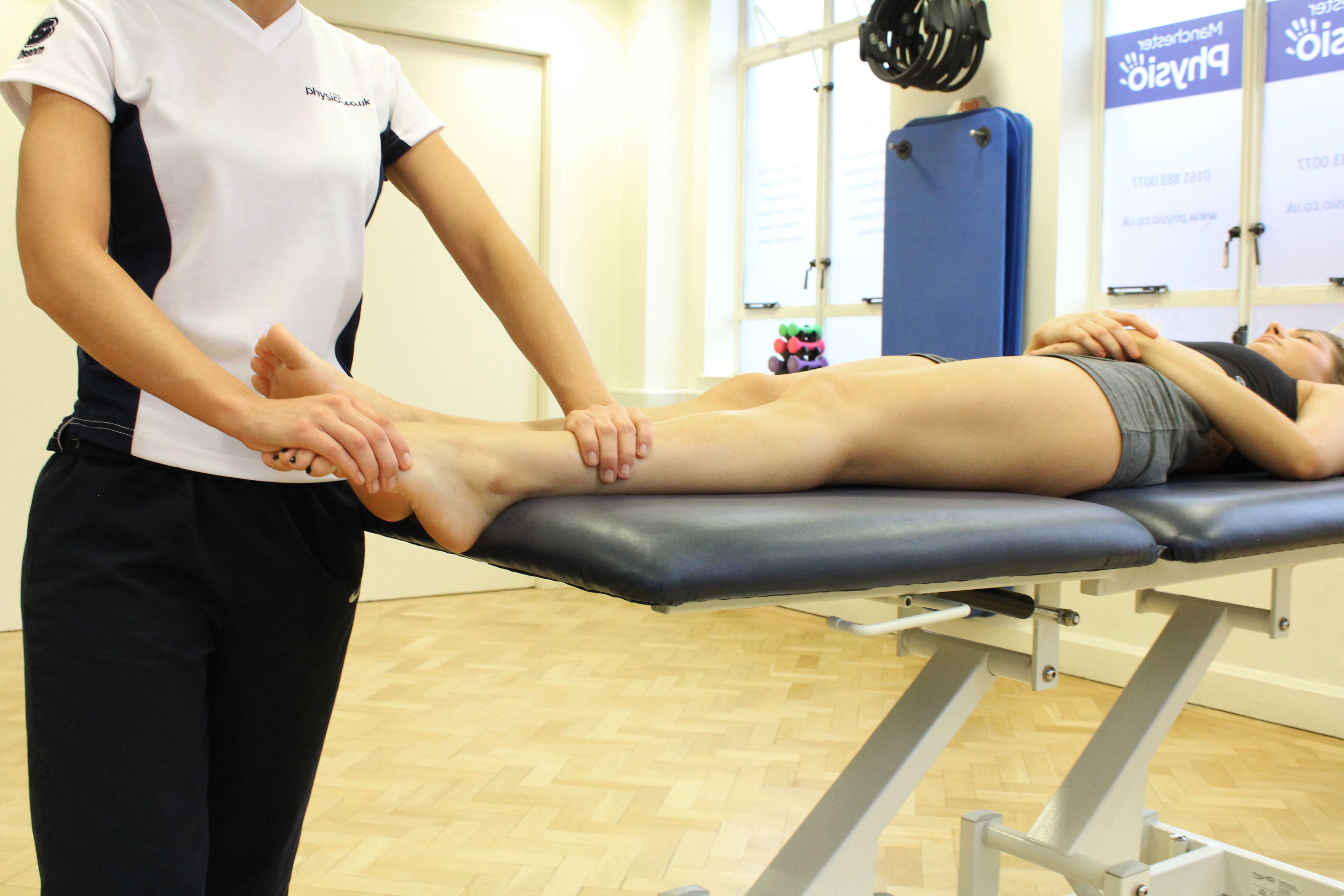Ankle arthroscopic debridement
Arthroscopy is a form of keyhole surgery during which a small telescope is placed inside the joint using small incisions to ‘wash out’ any loose or additional material that might be causing you pain or discomfort. Arthroscopic debridement refers specifically to joints that have been affected by mild arthritis and involves the removal of cartilage or extra bone that may have developed. Debridement of the ankle means to tidy up the ankle joint. There may also be inflammation (swelling) in the joint which will be removed if it is causing you stiffness or pain. The extra bone is known as an osteophyte and they can cause a grating or clicking noise when you move the ankle joint. If possible, ankle arthroscopy is preferred over open ankle surgery such as joint fusion as it causes less trauma to the joint and a faster recovery time. Although arthroscopic debridement is most commonly used for arthritis of the ankle, it can also be useful for the following conditions:
- Pain and stiffness following a fracture
- Diseases of the cartilage (joint lining) and synovium (membrane lining the joint)
- An unstable ankle
- Ligament damage
- Loose bodies (extra bone/ cartilage) that have developed from trauma to the joint
- Mild rheumatoid arthritis
 Above: Soft tissue friction massage of the ankle ligaments
Above: Soft tissue friction massage of the ankle ligamentsPhysiotherapy prior to ankle arthroscopic debridement
This type of surgery is elective (planned) and once you have decided to have the surgery, you will be placed on a waiting list before a date is confirmed. During this time, it is important that you allow your ankle joint the best possible chance of recovery by keeping it as mobile and strong as possible. A personalised physiotherapy programme designed by Physio.co.uk will help you prepare for surgery and will not only focus on the affected ankle joint but will also aim to keep other joints strong so that you maintain your independence. Physiotherapy may include the following:
- Strengthening of the affected ankle and surrounding joints
- Increasing/ maintaining the range of movement of the ankle joint
- Pain relief advice
- Cardiovascular exercise
- Hydrotherapy if appropriate
- Upper limb exercises
- There are also types of electrotherapy that may help reduce the swelling in your ankle joint (please see pages on electrotherapy for more details)
 Above: Mobilisations and stretches applied to the connective tissues in the ankle
Above: Mobilisations and stretches applied to the connective tissues in the ankleSymptoms after ankle arthroscopic debridement
You will be able to put some weight through the ankle joint during the first few days after the operation. You may use crutches during this time but will be able to fully weight bear after that depending on your pain levels. A bandage will be used to protect the area after surgery and this can be removed one week after your operation. After two weeks your stitches will be taken out and you will be able to get the area wet. You will still be able to carry out your exercises with the bandage on. You may also experience the following symptoms:
- Temporary pain and stiffness in the ankle
- Swelling
- A scar from where the incisions were made
- You may experience tingling or numbness temporary if the nerves supplying the foot and ankle region become damaged. Normal sensation will, gradually return as the nerves regenerate (grow back)
- Slight bleeding into the joint from the operation is a small possibility but this normally does not present with any symptoms
- You will not be able to drive during the week following your operation
- You will be able to return to work after the first few days depending on whether you are fully weight bearing
- You may have to wait up to 3 months to return to competitive sport although it is important that you work with your physiotherapist at Physio.co.uk to gradually build up to this
Physiotherapy after ankle arthroscopic debridement
Immediately after the operation you will be able to begin your rehabilitation programme at Physio.co.uk. You can carry out simple foot and ankle exercises in sitting and lying during the first few days whilst you are not fully weight bearing. This will not only improve range of movement but also help reduce any swelling and stiffness around the joint from the operation.
 Above: Passive stretch of connective soft tissues in the ankle
Above: Passive stretch of connective soft tissues in the ankleWeek 1
After the operation you will be placed in several layers of bandage to support the ankle joint. During the first week, the physiotherapy programme designed for you by Physio.co.uk will include:
- Simple exercises in a non-weight bearing position to reduce stiffness and swelling
- Cryotherapy (ice therapy) to further reduce swelling and help minimise pain
- Upper limb activities to maintain strength and range of movement
- Assistance with walking with your crutches for the first few days
- Re-education of your walking pattern without the crutches
- Gentle cardiovascular exercises when you are fully weight bearing
- Gentle joint mobilisations to improve the movement in the ankle joint
- Continuing with the exercise programme for surrounding joints
Weeks 2-3
You will now be fully weight bearing and without bandage and stitches from the surgery. Physiotherapy at this stage will centre around your return to work or sport/hobbies and your programme may include the following:
- Progression of lower limb exercises including strength and range of movement. At this stage your ankle movement will be returning to normal and should be with considerably less pain and stiffness
- More dynamic walking re-education including steps, inclines and different surfaces
- Functional activities depending on your job or sport
- Scar mobilisations if necessary
- Balance and proprioception (joint awareness) activities
- A progression of joint mobilisations
- Continuing with cardiovascular exercises including treadmill, cycling and hydrotherapy
Weeks 4 onwards
You should now have much greater strength and movement in the affected ankle joint and should experience less pain and discomfort during movements. You will be able to drive and should have returned to work or normal activities of daily living if no complications occurred. If you participate in competitive sport your physiotherapist at Physio.co.uk will be concentrating on gradually building up your programme to focus on this end goal. Physiotherapy will now include:
- Sport specific activities
- Further progression of strength exercises
- Dynamic balance exercises
- Progression of cardiovascular exercises to the level prior to your operation
- Soft tissue massage and stretching of tight muscle groups e.g. calf, hamstrings, quadriceps
- Joint mobilisations focussing on the very end of the movement
Summary
Arthroscopic debridement is a method of keyhole surgery which aims to remove any material from the joint (cartilage, synovium, osteophytes) to improve function and reduce pain. It is a technique mainly used for mildly arthritic joints but there are also other conditions that may benefit from arthroscopic debridement including unstable joints, diseases of the synovium or cartilage and severely inflamed joints (rheumatoid arthritis). The success rates for this surgery are extremely high and with a personalised programme designed from one of the physiotherapists at Physio.co.uk, you will optimise your rehabilitation outcome. The physiotherapy programme will help you return to sport, work or hobbies as soon as possible and will minimise the potential for any post-operative complications. Please call Physio.co.uk today on 0330 088 7800 today to book an appointment with one of the experienced physiotherapists.

 0330 088 7800
0330 088 7800

































